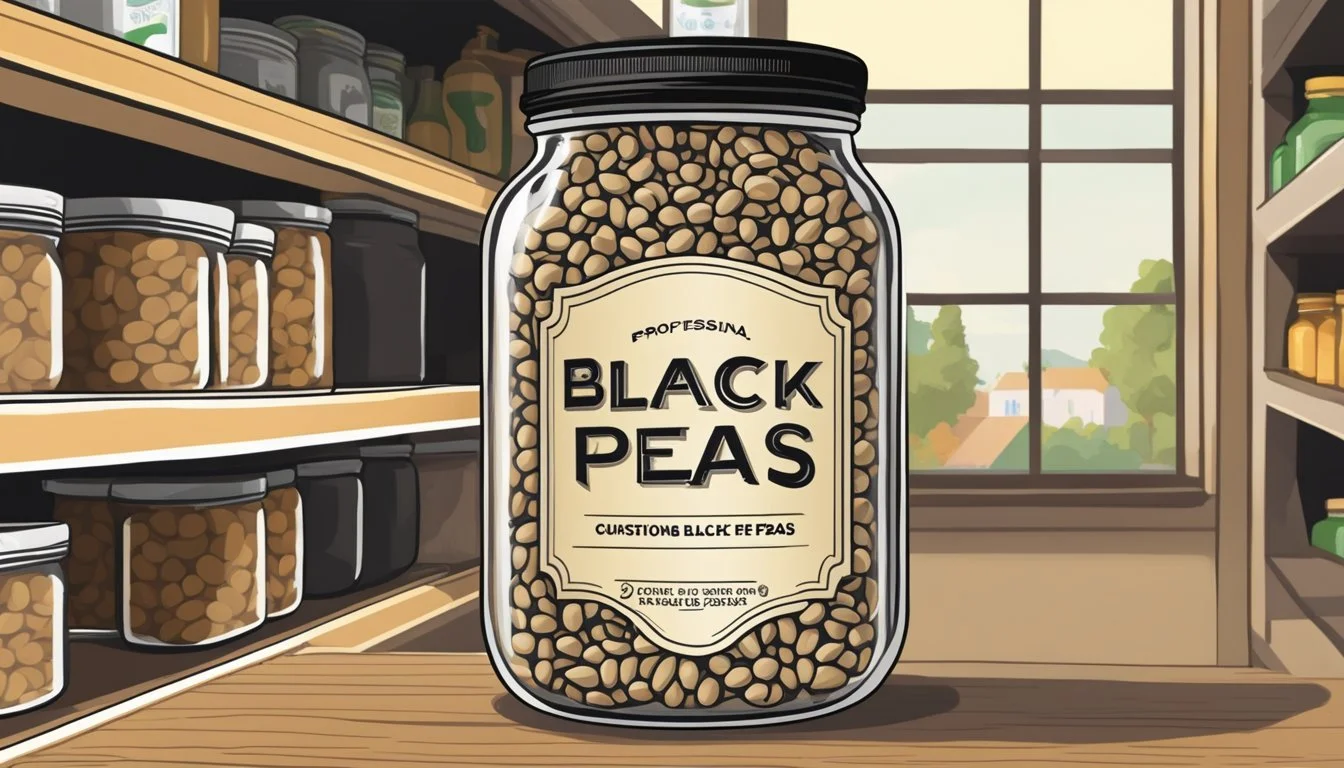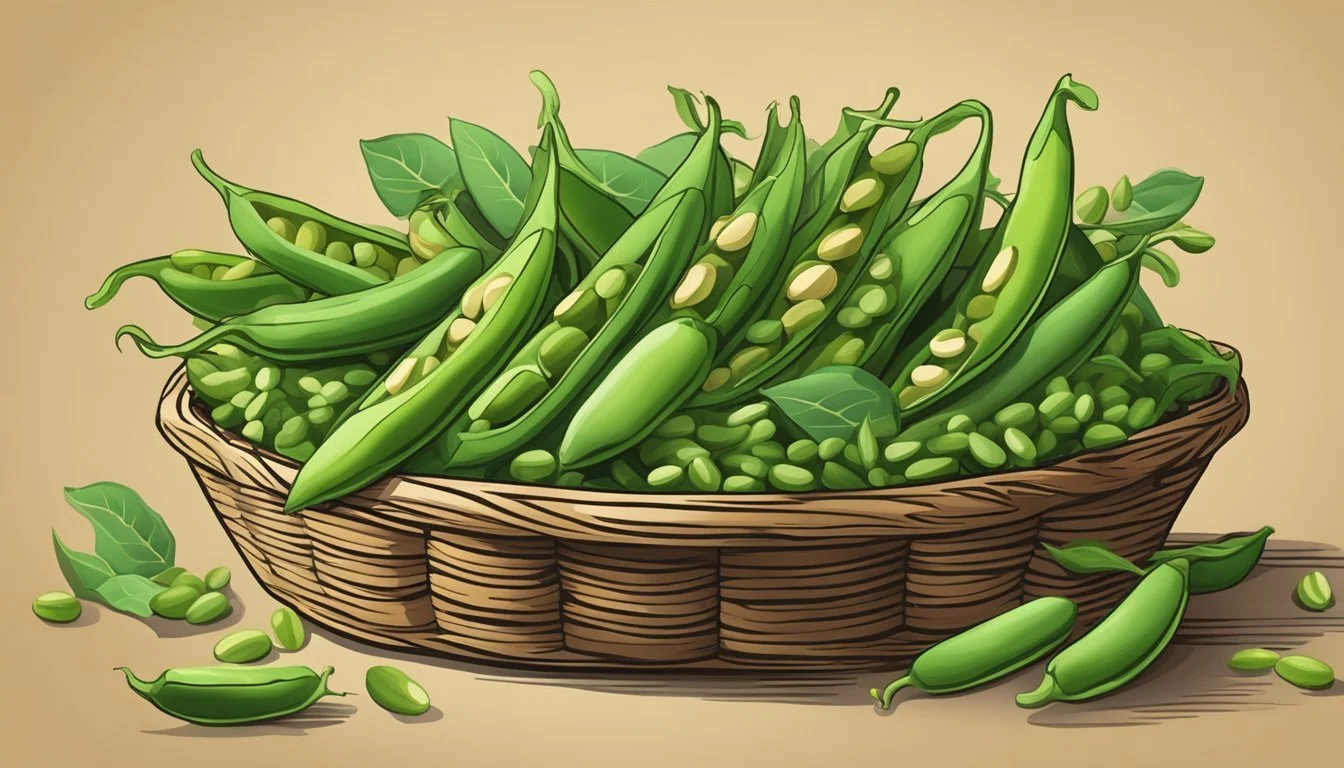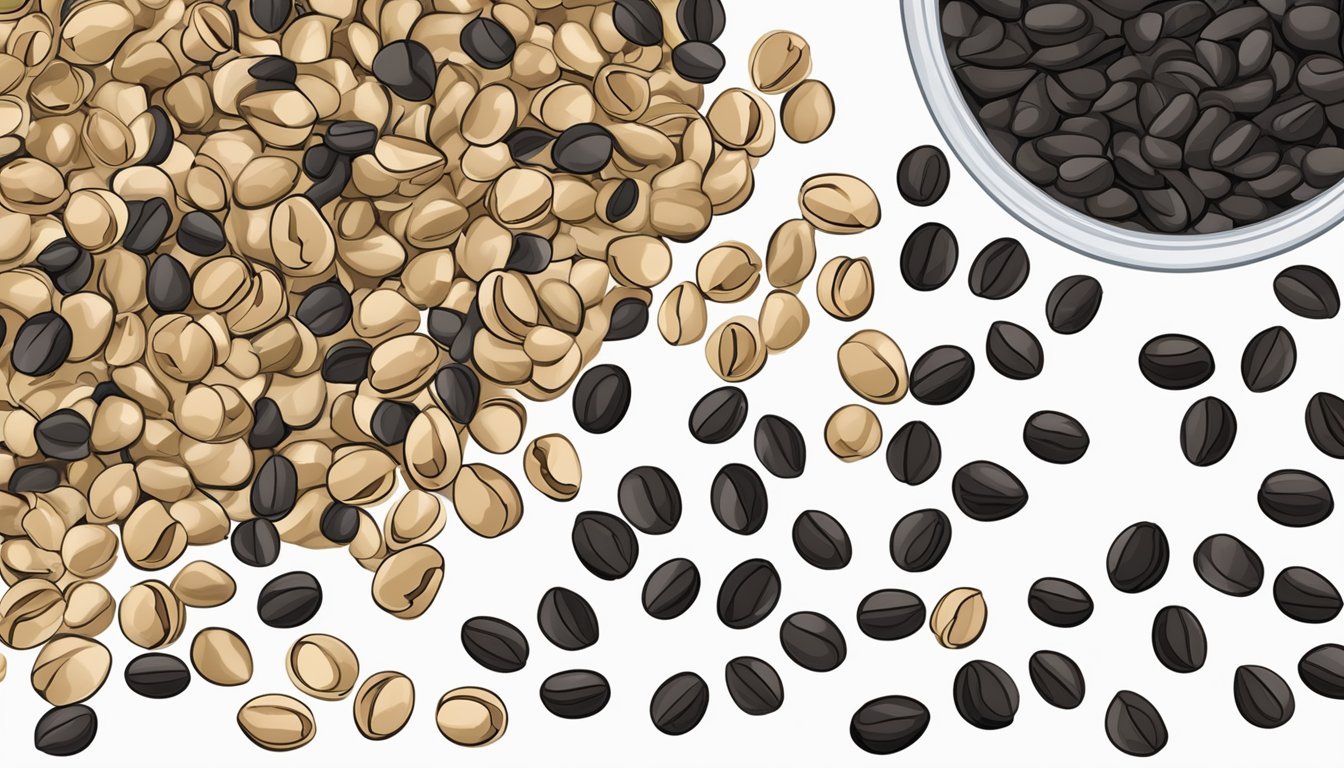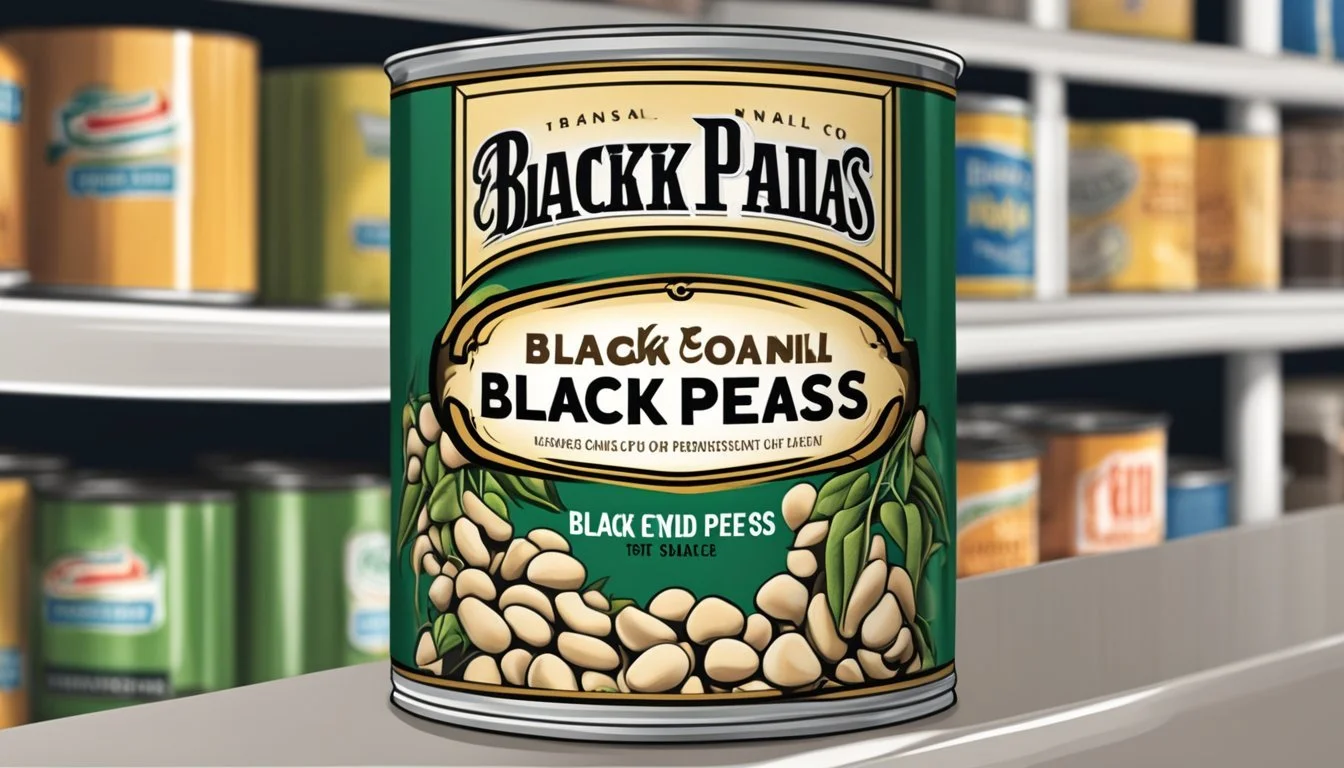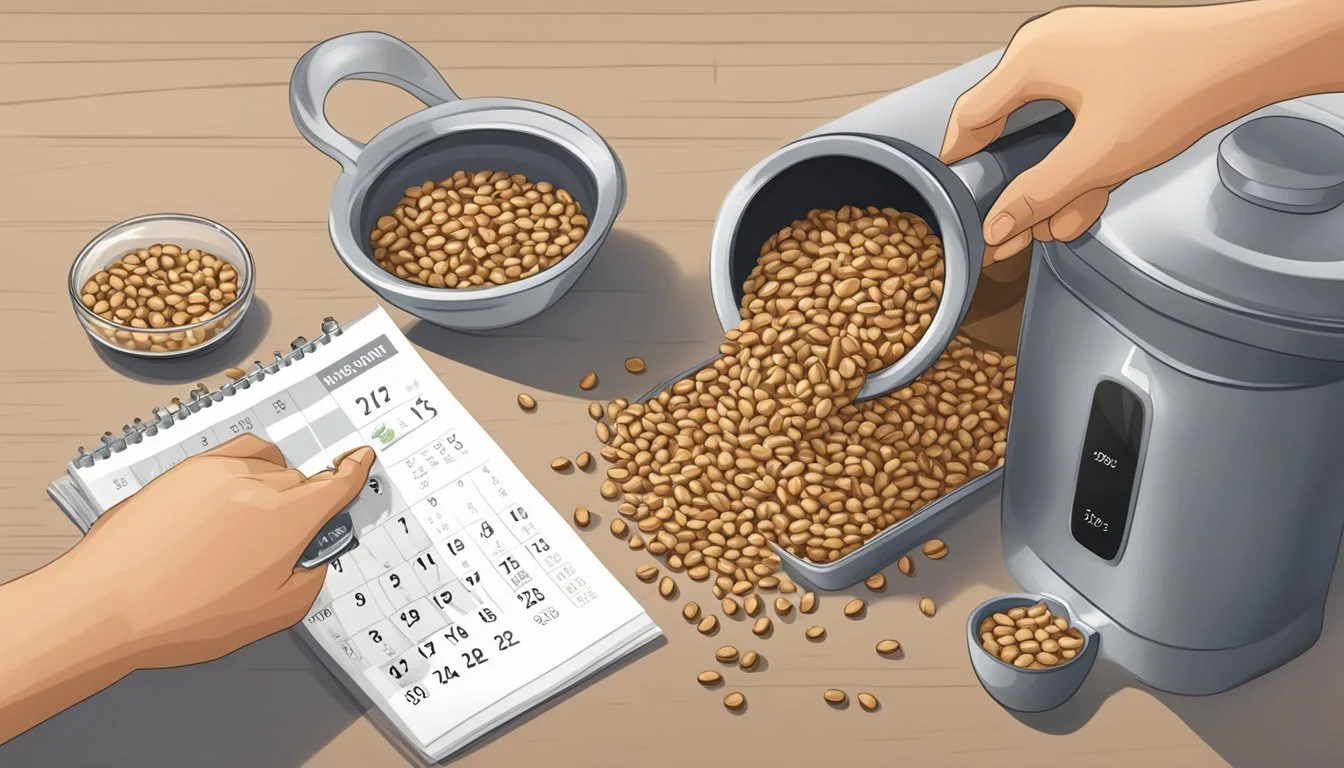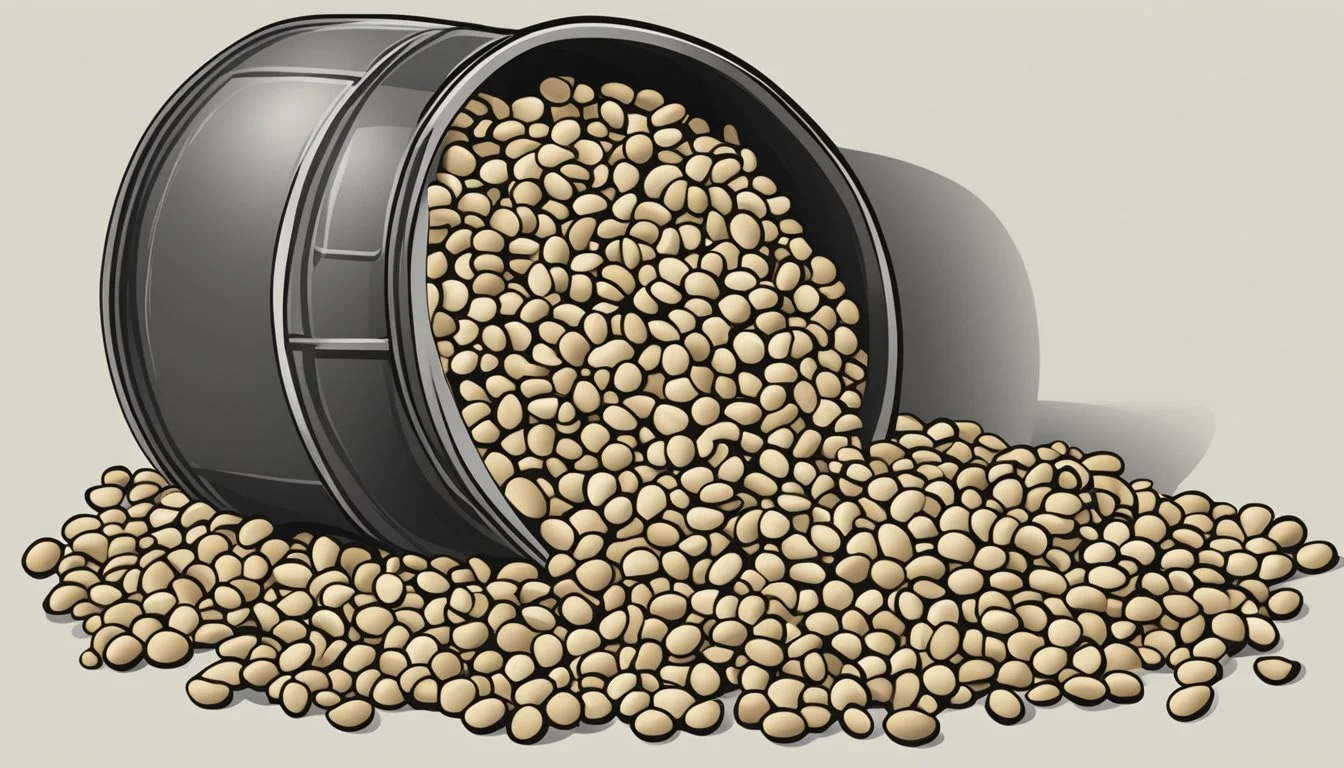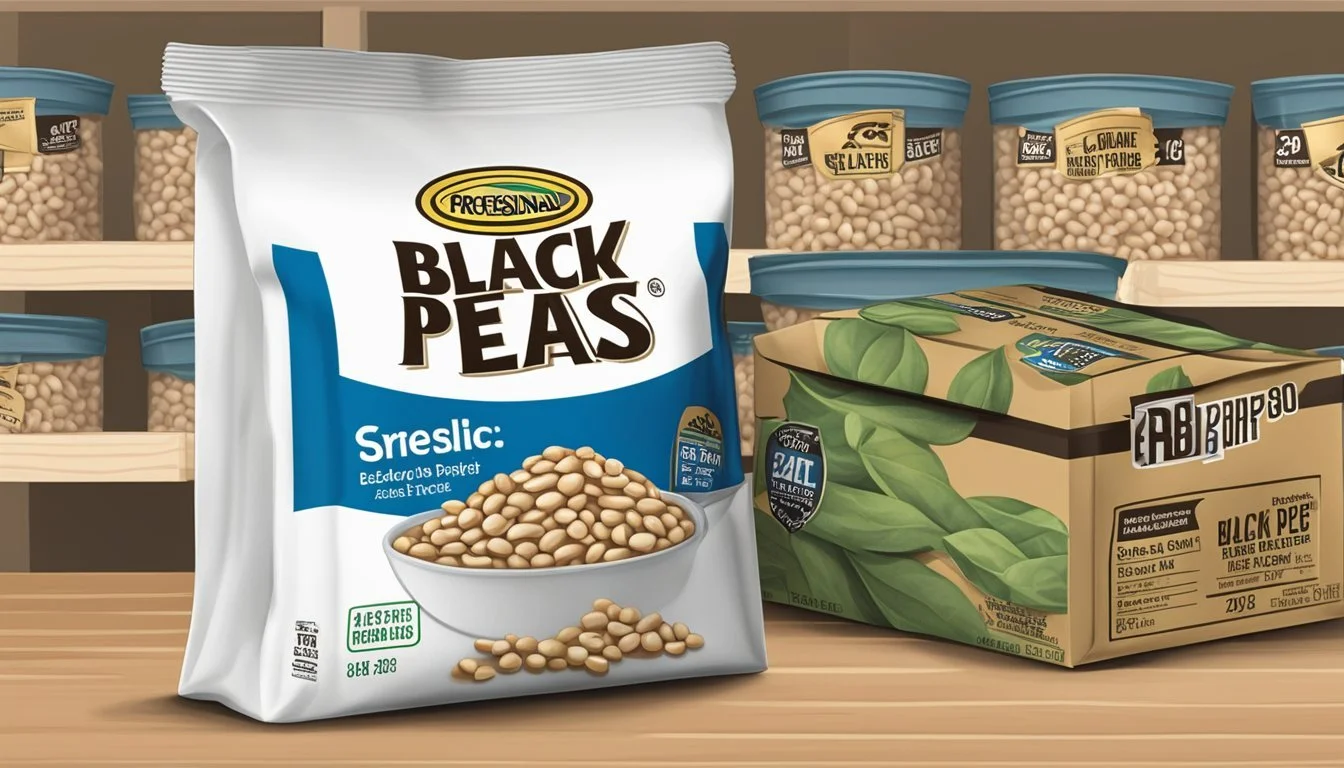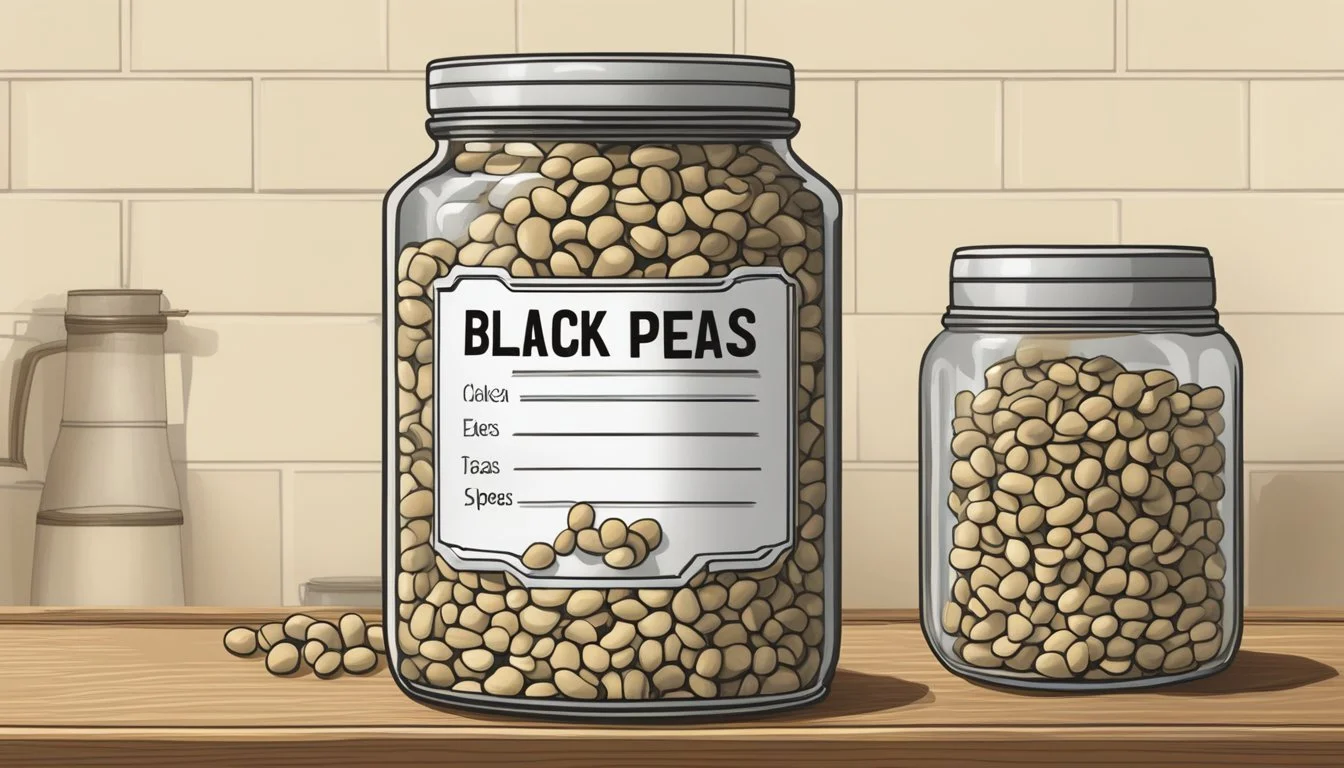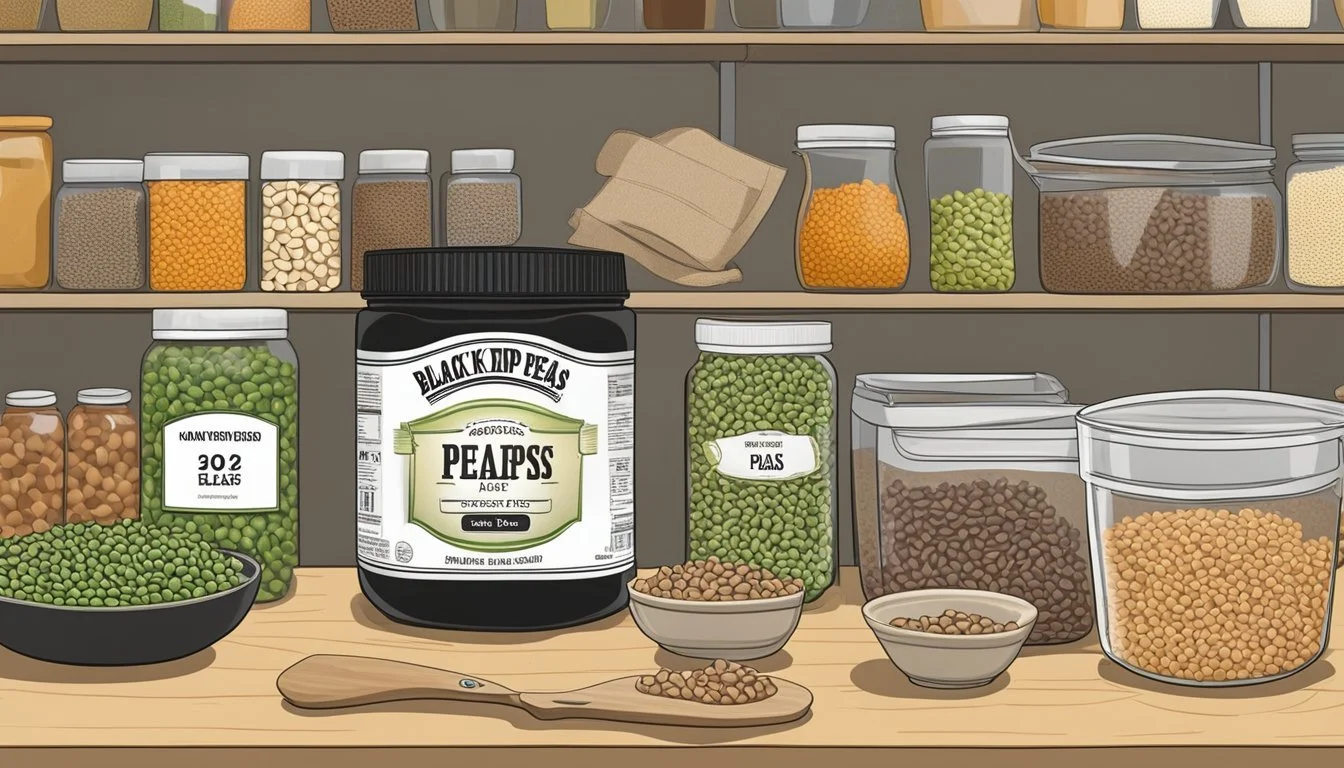How Long Do Black-Eyed Peas Last
Shelf Life and Storage Tips
Black-eyed peas are a staple ingredient in many cuisines, appreciated not just for their distinctive flavor but also for their nutritional benefits. When it comes to shelf life, these legumes vary greatly in longevity depending on their state—dried, canned, or cooked. Dried black-eyed peas, when stored properly in an airtight container away from heat and moisture, can last for up to two years. This ensures the peas retain their taste, texture, and nutritional value, though it's always advisable to check for signs of spoilage such as mold or off odors before use.
Cooked black-eyed peas require different handling to maximize their freshness. In the refrigerator, they should be stored in shallow containers to allow for quick cooling and to reduce the risk of bacterial growth. When stored correctly, cooked black-eyed peas can remain edible for four to five days. Freezing cooked peas can extend their shelf life further, making them a convenient option for meal planning.
Understanding the storage and lifespan of black-eyed peas can help avoid food waste while ensuring the quality of this versatile legume is preserved for various dishes. Regular checks for signs of spoilage are important, as black-eyed peas can go bad, affecting taste and potentially food safety if consumed past their prime.
Fresh Black-Eyed Peas
Fresh black-eyed peas are known for their creamy texture and distinctive flavor, but their shelf life is shorter than their dried counterparts. Proper storage is key to maintaining their freshness.
Shelf Life and Expiration Date
Fresh black-eyed peas should ideally be consumed within two to four days after purchase when stored in the fridge. To extend their freshness, one should place them in an airtight container before refrigerating. If the fresh peas are not intended for immediate use, labeling the container with the purchase date helps keep track of their freshness.
Signs of Spoilage
One can identify spoiled black-eyed peas by looking for a few signs:
Appearance: They should be plump and free of blemishes. Shriveled beans or discoloration often indicates spoilage.
Odor: A sour or off smell is a clear indicator that the black-eyed peas are no longer fresh.
Texture: Any signs of sliminess or stickiness upon touching the peas suggest they should not be consumed.
For optimal quality, fresh black-eyed peas should not be left at room temperature for extended periods, as this accelerates spoilage.
Dried Black-Eyed Peas
Dried black-eyed peas typically have a long shelf life, where proper storage conditions can significantly extend their usability.
Storage Conditions
Ideal storage for dried black-eyed peas involves placing them in a cool, dry place away from sunlight and humidity. A pantry or a cupboard away from heat sources such as ovens and stovetops is often considered optimal. Ensuring they are in airtight containers is crucial to prevent exposure to moisture and pests, which can compromise their quality.
Maximizing Shelf Life
To maximize the longevity of dried black-eyed peas:
Store them in airtight containers to protect against environmental factors that can lead to spoilage.
Keep them in a cool, dry place to maintain their texture and to prevent any loss of nutritional value.
Regularly check for signs of spoilage, like an off smell or mold, before usage.
While they often remain safe to consume for up to 1-2 years, it is always beneficial to consume them closer to the purchase date to enjoy their best quality.
Cooked Black-Eyed Peas
Cooked black-eyed peas offer both a nutritious and flavorful addition to meals. To maintain their taste and safety, proper storage is crucial.
Refrigerator Storage
Cooked black-eyed peas should be refrigerated within two hours of cooking to prevent bacteria growth. Correctly stored in a sealed container, they can last for 3 to 5 days. It's imperative to keep the refrigerator temperature at or below 40°F to ensure safety and maintain quality.
Freezer Storage
For longer storage, cooked black-eyed peas can be frozen. Here’s how to do it properly:
Ensure peas are cooled before freezing.
Place them in an airtight container or a heavy-duty freezer bag to minimize moisture and prevent freezer burn.
Label the container with the date of freezing.
Frozen cooked black-eyed peas can keep their quality for up to 6 months. Beyond that, they are still safe to eat but may experience a loss in flavor and texture.
Signs of Quality Loss
Be alert to these indicators that cooked black-eyed peas are declining in quality or are no longer safe to consume:
Texture: They should be firm but tender; if they become mushy or unusually hard, it’s a sign of degradation.
Flavor: A sour or off flavor indicates spoilage.
Visual Changes: Mold or any other visual changes are a sign to discard the peas immediately.
Canned Black-Eyed Peas
When it comes to canned black-eyed peas, they maintain quality when the can is intact and stored correctly. Once opened, however, their longevity is dependent on proper refrigeration and storage methods to prevent bacterial growth.
Shelf Life After Opening
After opening, canned black-eyed peas should be transferred to a glass or plastic container, tightly covered, and refrigerated. They are typically safe to consume for:
Refrigerator (3-4 days): Beyond this period, one should inspect the peas for any signs of spoilage before use.
Preservation Tips
To ensure the canned black-eyed peas retain their quality and minimize the risk of bacterial growth, one should follow these storage tips:
Prompt Refrigeration: Do not leave the opened can at room temperature for more than two hours.
Air-Tight Storage: Refrigerate the peas in a covered glass or plastic container to prevent contamination and drying out.
No Empty Cans: Always remove the peas from the can before storing to avoid potential metal leaching, especially if the can is not lined with a protective coating.
Preparation and Usage
Before incorporating black-eyed peas into dishes, understanding their cooking requirements and versatility in recipes is crucial. The preparation method significantly affects their texture and suitability for various types of meals.
Cooking and Reheating
Cooking Time: To prepare black-eyed peas, one should first soak them, which can enhance their texture and decrease cooking time. Without soaking, expect cooking times to range from 30 minutes to 1 hour, until the peas reach the desired tenderness. For those who prefer their peas al dente, a cooking time closer to 30 minutes is adequate, while a full hour might yield a creamier result.
Reheat: When reheating cooked black-eyed peas, it's best done over a low to medium heat on the stove or in a microwave. Ensure you add a small amount of water or broth to prevent drying out. Stirring occasionally will help distribute heat evenly. Reheated dishes should reach an internal temperature of 165°F (74°C) for food safety.
Usage in Recipes
Salads and Dips: Cooled black-eyed peas lend themselves well to salads and dips after being cooked to a firm texture. They can be incorporated into a variety of recipes, maintaining their shape and adding a pleasing bite.
Soups, Stews, and Curries: Black-eyed peas are traditionally used in a range of hearty dishes. They should be added according to the recipe's cooking time, ensuring they soften appropriately to integrate well with other ingredients.
Patties: Cooked black-eyed peas can be mashed and formed into patties for grilling or frying. Their consistency helps patties hold together, and they absorb accompanying spices and herbs effectively.
In their use across recipes, black-eyed peas prove to be a versatile and healthy legume, useful for a broad spectrum of culinary applications.
Health and Nutrition
This section delves into the substantial health benefits of black-eyed peas and underscores the importance of safe consumption practices to maximize their nutritious potential.
Nutritional Benefits
Black-eyed peas, a type of legume, are celebrated for their rich nutrient profile. A single cup of cooked black-eyed peas, which is approximately 165 grams, typically contains about:
Calories: 160
Protein: 13.2 grams
Fiber: 11.1 grams
Folate: 356 micrograms (89% of the daily value)
Iron: 4.3 milligrams
These components contribute to various health benefits, such as supporting heart health and aiding in weight management. The protein in black-eyed peas is vital for muscle repair and growth, while the fiber content aids digestive health. Folate is crucial for DNA synthesis and repair, and is particularly important for pregnant women to support fetal development. Iron is a key component of hemoglobin in red blood cells and helps in the transport of oxygen throughout the body.
Safe Consumption
When it comes to consuming black-eyed peas, safety is paramount to ensure the health benefits can be fully realized. It's important for consumers to store black-eyed peas properly to prevent spoilage. Dried black-eyed peas should be kept in a cool, dry place and can be stored for up to 1-2 years. Cooked black-eyed peas are best enjoyed within a few days when stored in the refrigerator, but they can also be frozen to extend their shelf life. Prior to consuming black-eyed peas that have been stored for a while, one should look for signs of spoilage, such as:
Off-smell: An unusual or rancid odor can indicate spoilage.
Mold Growth: Visible mold signifies that the black-eyed peas should not be consumed.
Texture Changes: If the peas are overly soft or have a slimy coating, they might be spoiled.
Consuming spoiled food can result in foodborne illnesses, so adherence to proper storage and inspection before use is critical for safety.
Spoilage and Food Safety
Ensuring the safety and edibility of black-eyed peas requires vigilance against spoilage. Mold growth, bacteria, and off odors are critical indicators to watch for in assessing whether the legumes remain safe to eat.
Identifying Spoiled Black-Eyed Peas
The most prominent signs of spoilage in black-eyed peas include:
Appearance: Black-eyed peas that have spoiled will often exhibit visual cues such as mold or discoloration. Mold may appear as fuzzy spots of various colors, indicating that the peas should be discarded immediately.
Smell: A sour or off odor is a clear signal that black-eyed peas have begun to harbor bacteria growth and should no longer be consumed.
Preventing Foodborne Illnesses
To prevent foodborne illnesses linked to consuming spoiled black-eyed peas, one should:
Store black-eyed peas in a cool, dry place and keep them in an airtight container to stave off moisture and mold.
Regularly inspect black-eyed peas for any signs of spoilage such as mold growth or an unpleasant odor and discard any that are not safe for consumption.
Advanced Storage Techniques
To guarantee the extended preservation of black-eyed peas, advanced storage techniques such as freezing and oxygen reduction are paramount. These methods significantly deter the degradation processes that affect the peas' quality.
Freezing for Longevity
Freezing black-eyed peas is an effective method to extend their shelf life while preserving their nutritional value. Once cooked, black-eyed peas should be allowed to cool down completely to room temperature before being placed in freezer bags. To freeze:
Distribute the peas in a single layer on a baking sheet.
Place the sheet in the freezer until the peas are individually frozen.
Transfer the frozen peas into airtight containers or freezer bags, removing as much air as possible.
Label the containers with the current date before sealing and placing them back into the freezer.
This approach reduces oxidation and temperature fluctuations, two factors that can deteriorate peas' quality over time.
Vacuum Sealing and Oxygen Reduction
Vacuum sealing black-eyed peas can extend their shelf life by removing air from the storage environment. Oxygen can lead to deterioration through oxidative processes; therefore, reducing its presence is crucial:
Place the peas in vacuum seal bags.
Use a vacuum sealer to extract the air and create an airtight container.
Ensure the bags are sealed properly before storing in a cool, dark place.
Peas stored this way can be kept for months or even years, depending on the storage environment and the consistency of the temperature. To use the peas, simply thaw them under refrigeration or by submerging the sealed bag in cold water.
Packaging and Label Insights
Accurate interpretation of packaging labels and ensuring packaging integrity are fundamental in maximizing the shelf life of black-eyed peas.
Understanding Labels
Best-by and sell-by dates on black-eyed pea packaging provide consumers with information on the time frame for the best quality of the product. These dates do not indicate the exact point at which the food is no longer safe to consume but rather suggest when the product is at its peak quality. It is vital for consumers to understand that peas can still be safe to eat beyond these dates, given that proper storage measures are adhered to.
Best-by: Suggests when the product will be at peak freshness and flavor.
Sell-by: Often used by retailers for stock management, and not directly indicative of food safety.
Packaging Integrity and Storage
The integrity of packaging plays a critical role in extending the shelf life of black-eyed peas. Consumers should ensure that the peas are sealed in an airtight container or a plastic bag to protect them from pests and direct sunlight, which can degrade quality rapidly. For long-term storage, placing the peas in the freezer can significantly extend their shelf life while maintaining quality. It is essential to conduct routine testing of the packaging for any signs of damage or exposure that could compromise the peas' shelf life.
Airtight Containers: Preferable for maintaining freshness and keeping out pests.
Avoid Direct Sunlight: Preserves quality by preventing the breakdown of nutrients and flavors.
Freezer Storage: An excellent option for long-term preservation, keeping the peas close to their best state.
Practical Tips and Tricks
To maintain the quality of black-eyed peas and to optimize their use in various dishes, understanding how to extend their freshness and make appropriate culinary use adjustments is crucial.
Extending Freshness
Black-eyed peas, when stored properly, can retain their freshness for up to six months and remain of acceptable quality for about one year. To achieve this, one should:
Storage: Place the black-eyed peas in an airtight container or their original packaging. Ensure they are kept in a cool, dry area away from direct sunlight and heat sources.
Freezing: For long-term storage, freezing is an effective method. Seal the peas in a freezer-safe bag or container, eliminating as much air as possible to prevent freezer burn.
Culinary Use Adjustments
Cooking black-eyed peas to the desired texture and leveraging their culinary versatility is as important as proper storage.
Cooking Time: Test the peas after 35 minutes of cooking. For a tender yet firm texture, they may be ready, or for a creamier texture, they might require up to an hour of cooking.
Digestion: Incorporating ingredients that are rich in folate, such as black-eyed peas, can aid in digestion and potentially reduce gas production.
Texture and Flavor: Avoid overcooking as it may lead to a slimy texture and flavor degradation. When reheating leftovers, do so gently to preserve their texture and quality.
By adhering to these practical storage and cooking tips, one can ensure the freshness, flavor, and nutritional value of black-eyed peas are preserved, making them a versatile addition to a variety of culinary uses.
Understanding Black-Eyed Peas
Black-eyed peas are a versatile legume, prized for their protein and fiber content, offering essential nutrients that contribute to a balanced diet. Their storage life varies significantly depending on their form, be it dried, canned, or uncooked.
Different Varieties and Forms
Dried Black-Eyed Peas:
Shelf Life: Can last up to 1-2 years when stored properly.
Storage Conditions: Cool, dry place in an airtight container to retain freshness.
Nutritional Value: High in protein and fiber, while also providing other essential nutrients.
Shelf Life: Generally shorter than dried; check the expiration date on the can.
Storage Conditions: Store in a cool, dry place; refrigerate after opening.
Convenience: Offer quicker preparation than dried as they are pre-cooked.
Proper Selection and Purchase
When selecting black-eyed peas, freshness is a key indicator of quality, irrespective of the form:
Dried Black-Eyed Peas:
Look for evenly sized peas without cracks or discoloration.
Purchase from stores with a high turnover to ensure they are as fresh as possible.
Canned Black-Eyed Peas:
Check for cans that are free from dents, rust, or swelling.
Opt for those with the farthest expiration date to ensure longer shelf life.
By understanding the different forms of black-eyed peas and how to select them, one can ensure they are incorporating a fresh, nutritious, and versatile ingredient into their meals.

